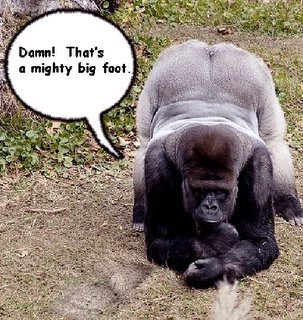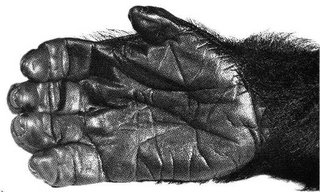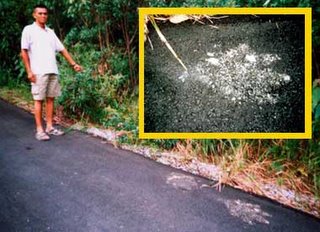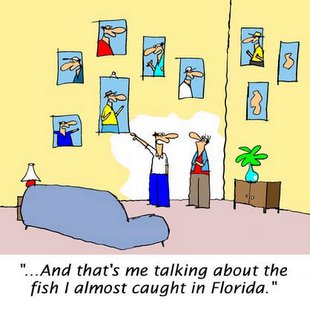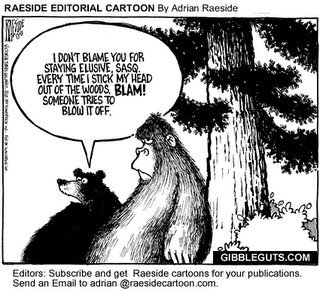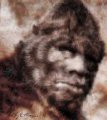
*
Photo of Jimmy Chilcutt*
Jimmy Chilcutt retired from the Conroe Police Department after 18 years as a latent fingerprint examiner and crime scene investigator. He has over 26 years active duty as a police officer and holds a Master Police Officer Certification from the State of Texas.
Jimmy Chilcutt - Forensic Expert Witness After graduating from Jackson High School in Lubbock, Texas Chilcutt entered the U.S. Army as a Pvt. E-1 and left the service after 9 years, attaining the rank of Chief Warrant Officer W-2. He had tours of duty in Korea and Vietnam.
Mr. Chilcutt has over one thousand classroom hours of instruction in forensic subjects including basic identification at D.P.S. Austin, advanced latent fingerprint comparison F.B.I. University of Houston, advanced latent palm print comparison Mississippi State Crime Lab, advanced crime scene investigation, and many other forensic related subjects. He has testified as a fingerprint expert on County, District and Federal courts in several counties in Texas and North Carolina. In the Crime lab he has developed unique procedures in developing latent fingerprints that have drawn hundreds of requests from Federal, State, and County agencies to process their evidence. These agencies include FBI, DEA, U.S. Customs Service, U.S. Secret Service, U.S. Postal Service, DPS Narcotic Units throughout Texas, and various County Sheriff Departments.
Awards received for his outstanding service in forensics include, three City of Conroe outstanding officer awards, one meritorious service award, three county wide officer of the year awards, the 100 Club officer of the year award, and the coveted Directors Award from the director of the Texas Department of Public Safety.
Mr. Chilcutt has often been a guest lecturer at Sam Houston State University, Idaho State University, North Harris County College, and for the Conroe High School Criminal Justice Program. He also teaches the State of Texas Intermediate Crime Scene Investigation Core Course at the FBI/Conroe P.D. training facility.
Article from the Houston Chronicle:
Jimmy Chilcutt is not someone most people would associate with the kind of wild, unsubstantiated stories that show up in supermarket tabloids. Chilcutt, 54, is skeptical by nature. His job as a fingerprint technician at the Conroe Police Department requires hard-nosed judgments and painstaking attention to detail.
He is highly regarded by agents of the FBI, the Drug Enforcement Administration, and state and local law enforcement agencies because of his innovative techniques and ability to find fingerprints where others fail.
But in doing what comes naturally -- being careful and thorough -- he ended up rocking his own skepticism about one of the most sensational tales that routinely show up in the tabloids.
Chilcutt's quest to squeeze more information out of fingerprints led him to develop a rare expertise in nonhuman primate prints. He tried to use his special knowledge to debunk alleged evidence of Bigfoot, also known as Sasquatch.
But his examination of alleged Bigfoot footprint castings didn't lead to the conclusion he had expected. He now believes that -- while some of them are fakes -- some are the genuine prints of a reclusive animal that has yet to be documented and studied.
The path to Chilcutt's unusual investigation began with an idea he had in 1995. "If I could look at fingerprints and could tell the sex, gender and race, I'd be way ahead," he recalled. He began examining fingerprints to determine whether there were differences based on race or sex.
It finally occurred to him that the key to understanding human fingerprints could lie in nonhuman primates. Primates are members of the order of mammals that includes humans, great apes, monkeys and lemurs. Chilcutt said he hoped to find primordial characteristics that would unlock hidden information in human fingerprints. First, he had to convince a zoo or a research center to allow him to take fingerprints. "It was hard to find somebody who would let you fingerprint their monkey," he said.
After being rebuffed about 25 times over three months, he called Ken Glander, director of the Duke University Primate Center in Durham, N.C. Impressed by Chilcutt's expertise, Glander offered prints from his collection of lemurs. But Chilcutt was primarily interested in apes, so Glander steered him to the Yerkes Regional Primate Center at Emory University in Atlanta.
Kaylee Summerville, occupational health program coordinator at Yerkes, said Chilcutt's request was received with caution.
After checking Chilcutt's credentials, the center arranged for him to take prints of apes at the Atlanta zoo during an annual medical checkup, while the apes were anesthetized. Since then, Chilcutt has amassed a collection of about 1,000 nonhuman primate prints. He has 350 prints.
He said there are only about four or five researchers working with nonhuman fingerprints. "All are biologists," Glander said. "We don't have fingerprint expertise."
Chilcutt studied the primate prints and discovered characteristics that distinguish different species and traits within species. He said he has become an expert on primate prints through long study of his samples, although he is not yet able to decipher human fingerprints.
But an opportunity arose in December 1998 to put his rare knowledge to use. He was at his home in Montgomery reading a book one evening, barely paying attention to a TV program about Bigfoot.
His interest was piqued, however, when he heard the term "dermal ridges," a reference to fingerprints.
He listened closely as Dr. Jeff Meldrum, associate professor of anatomy at Idaho State University, held a casting of a supposed Bigfoot footprint and pointed to what appeared to be the loops and whorls of prints.
Believing he could determine the authenticity of the prints, Chilcutt phoned Meldrum, a specialist in primate anatomy and locomotion. "If there is a Sasquatch, only a handful of people in the world know the difference between a primate and a human print," Chilcutt said. Meldrum said he was delighted to find someone who could help authenticate his collection of about 100 castings of supposed Bigfoot footprints.
Searching for Bigfoot
A skeptical Chilcutt arrived in Pocatello, Idaho, last April and began studying the collection.
He first examined the casting Meldrum had shown on TV and quickly determined it to be a fake. The toeprints were actually human fingerprints. Meldrum turned him loose on the entire collection.
The print ridges on the bottoms of five castings -- which were taken at different times and locations -- flowed lengthwise along the foot, unlike human prints, which flow from side to side, he said.
"No way do human footprints do that -- never, ever. The skeptic in me had to believe that (all of the prints were from) the same species of animal," Chilcutt said. "I believe that this is an animal in the Pacific Northwest that we have never documented."
Meldrum, for whom the study of Bigfoot prints is a sideline, believes it's a legitimate, scientific inquiry. "A misconception is often perpetrated that this should be relegated to the tabloids," he said. "The question is, what made the tracks? They are there; that is indisputable. It's either a hoax or the track of a living animal. "Officer Chilcutt has brought his expertise to that question. We will never know for sure until a specimen is collected. Until then, it's unscientific, in my opinion, to dismiss this evidence without giving it an airing." Glander, who was casually acquainted with Meldrum when Meldrum taught briefly at Duke, said: "Do I believe in Bigfoot? I don't know, but I think it's one of those things that is interesting and intriguing."
*Copyright 2000 Houston Chronicle*
Mr. Chilcutt is still active in Investigations for Attorneys. His website is listed below.
http://www.jhcforensicconsultant.com/ *Photo of Matt Crowley*
*Photo of Matt Crowley*

